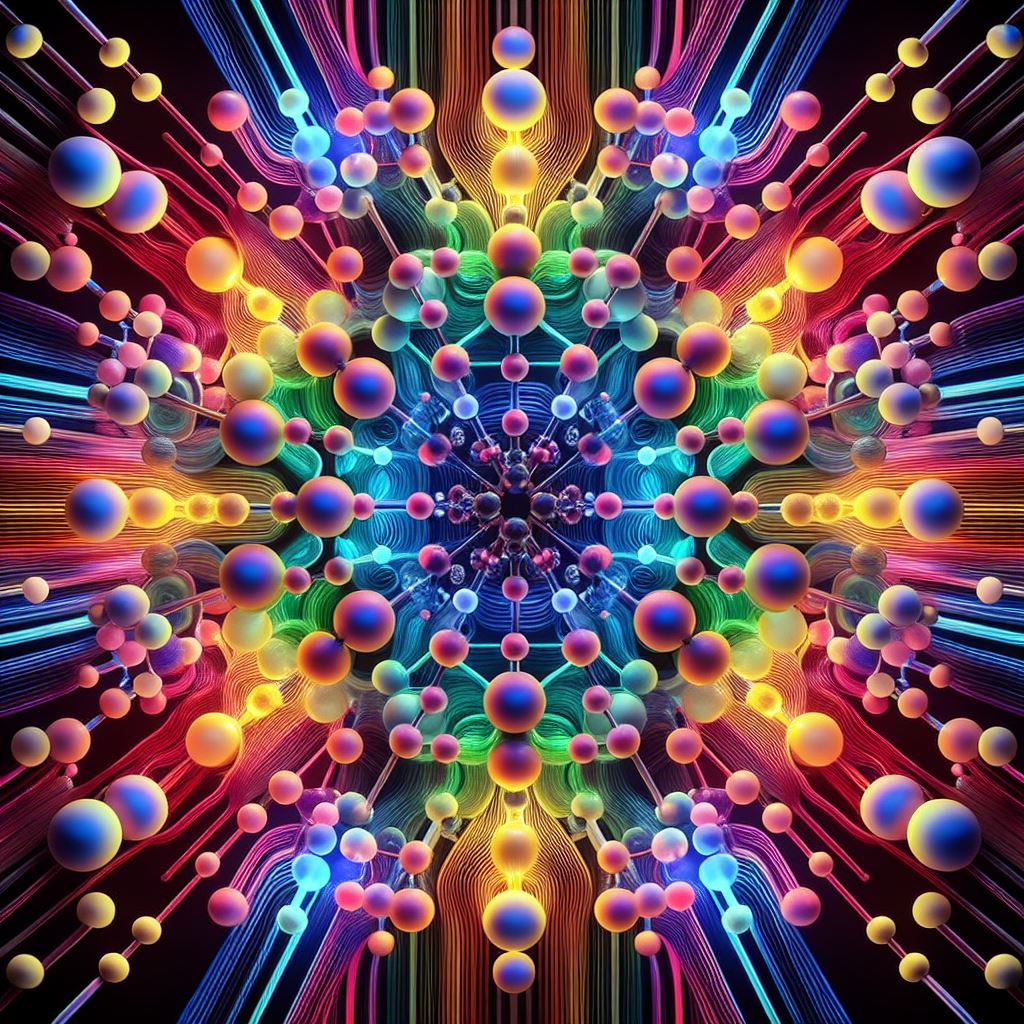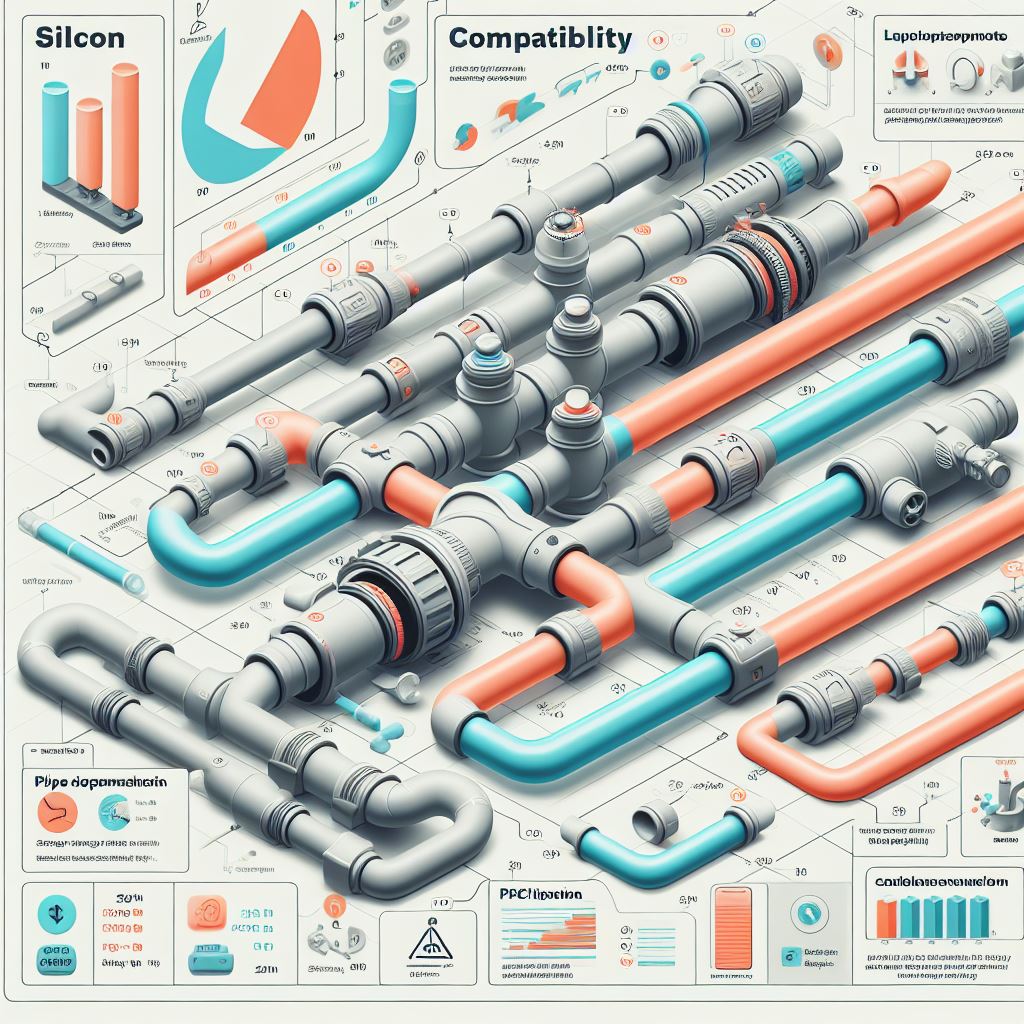Can silicon contain PVC? Silicon and PVC are two commonly used materials in various industries. Understanding their compatibility is important to ensure the safety and effectiveness of products. In this article, we will explore the properties of silicon and PVC, examine their compatibility, discuss their applications, and explore alternatives to these materials. Here are the key takeaways from this article:
Key Takeaways
- Silicon is a chemical element with unique properties, including high heat resistance and excellent electrical conductivity.
- PVC, or polyvinyl chloride, is a synthetic plastic polymer known for its durability and versatility.
- Silicon and PVC are not compatible due to chemical and physical interactions that can occur between the materials.
- Silicon has a higher temperature resistance compared to PVC, making it suitable for high-temperature applications.
- Long-term exposure to PVC can have negative effects on human health and the environment, making eco-friendly alternatives important.
Understanding Silicon and PVC
What is Silicon?
Silicon is a chemical element with the symbol Si and atomic number 14. It is a hard, brittle crystalline solid with a blue-grey metallic lustre, and is a tetravalent metalloid and semiconductor. It is a member of group 14 in the periodic table: carbon is above it; and germanium, tin, and lead are below it. Because of its high chemical affinity for oxygen, it was not until 1823 that Jöns Jakob Berzelius was able to prepare it in pure form.
The second-highest melting point and boiling point among all metalloids and nonmetals, at 1414 °C and 3265 °C respectively, are only surpassed by boron. Silicon ranks as the eighth most common element in the universe by mass but rarely occurs as the pure element in the Earth’s crust. Dusts, sands, planetoids, and planets widely distribute it, existing in various forms of silicon dioxide (silica) or silicates. Scientists believe that silicon results from the cosmic absorption of alpha particles, at a temperature of about 109 K, by the nuclei of carbon-12, oxygen-16, and neon-20.
What is PVC?
PVC, short for polyvinyl chloride, is a versatile plastic material widely used in various industries. It is commonly used to make clothing, shoes, and to cover chairs. PVC offers excellent durability and flexibility, making it suitable for a wide range of applications. It is known for its resistance to chemicals, weathering, and abrasion. PVC is also lightweight and easy to handle, making it a popular choice in many manufacturing processes. Despite its widespread use, there are concerns about the environmental impact of PVC production and disposal.
Properties of Silicon
Silicon has many unique properties. It is a solid element at standard conditions and has a metallic luster. One of its distinct properties is its brittleness. Silicon is also known for its high melting point and excellent thermal conductivity. Additionally, it is a semiconductor material, making it essential in the field of electronics. Silicon is widely used in the production of computer chips, solar cells, and other electronic devices.
Properties of PVC
PVC is a versatile material that has a wide range of properties and applications. It is known for its durability, flexibility, and resistance to chemicals and weathering. PVC is fire-resistant, self-extinguishing, and has good electrical insulation properties. It is also lightweight and easy to install. PVC demonstrates excellent performance characteristics, making it suitable for various industries such as construction, automotive, and healthcare.
Compatibility of Silicon and PVC
Chemical Interactions
Chemical interactions between silicon and PVC can have significant effects on their compatibility and performance. When silicon and PVC come into contact, they may undergo chemical reactions that can alter their properties and behavior. These reactions can result in changes in the physical and chemical properties of both materials, affecting their overall compatibility. It is important to understand these chemical interactions to ensure the safe and effective use of silicon and PVC in various applications.
Physical Interactions
When silicon and PVC come into physical contact, several interactions can occur. One important interaction is the improvement of persistent hydrophilicity and pore uniformity of PVC ultrafiltration membranes. A study found that the hydrophilicity of PVC material could be improved by the Si-OH groups immobilized through grafting and hydrolyzation of APTMS. This enhancement in hydrophilicity can lead to better performance of PVC membranes in filtration applications. Additionally, the physical interactions between silicon and PVC can also affect the mechanical properties of the materials, such as flexibility and durability. It is important to consider these physical interactions when using silicon and PVC together in various applications.
Temperature Resistance
Temperature resistance is a crucial factor to consider when evaluating the compatibility of silicon and PVC. Silicon has better heat resistance than PVC, making it suitable for applications that involve high temperatures. While PVC can withstand moderate temperatures, it may not be suitable for extreme heat conditions. It is important to note that the temperature tolerance of silicon and PVC can vary depending on the specific product and formulation. Therefore, it is recommended to consult the manufacturer’s specifications for the maximum temperature limits of each material.
Long-term Effects
Long-term exposure to PVC can have detrimental effects on human health and the environment. Studies have shown that phthalates, which are commonly found in PVC, can cause damage to the reproductive system, leading to infertility, testicular damage, reduced sperm count, suppressed ovulation, and abnormal development. Additionally, PVC can release toxic chemicals into the air and water, posing a risk to both humans and wildlife.
It is important to consider the long-term effects of PVC when using it in various applications. Alternatives to PVC, such as silicon, offer a safer and more environmentally friendly option. Silicon is known for its durability, heat resistance, and non-toxic properties, making it a suitable alternative to PVC in many cases.
In conclusion, the long-term effects of PVC highlight the need for alternative materials like silicon. By choosing safer and eco-friendly options, we can reduce the negative impact on our health and the environment.
Applications of Silicon and PVC

Silicon Applications
Silicon has a wide range of applications in various industries. Some of the key applications of silicon include:
- Electronics: Silicon is a crucial component in the manufacturing of semiconductors, which are used in electronic devices such as computers, smartphones, and televisions.
- Solar Energy: Silicon is used in the production of solar cells, which convert sunlight into electricity. It is one of the main materials used in the construction of solar panels.
- Medical Devices: Silicon is used in the production of medical devices such as implants, catheters, and prosthetics. Its biocompatibility and durability make it an ideal material for these applications.
- Construction: Silicon-based materials, such as silicones, are used in the construction industry for sealants, adhesives, and coatings. These materials provide excellent weather resistance and flexibility.
- Automotive: Silicon is used in the manufacturing of automotive parts, including gaskets, seals, and hoses. It provides heat resistance and durability.
PVC Applications
PVC, a synthetic resin made from the polymerization of vinyl chloride, is widely used in various applications. It is second only to polyethylene among the plastics in production and consumption. PVC is known for its versatility, durability, and cost-effectiveness. It is commonly used in construction materials, such as pipes, fittings, and window frames. PVC is also used in electrical cables, flooring, and medical devices. Additionally, it is found in a wide range of consumer products, including toys, packaging materials, and clothing.
Combined Applications
Silicon and PVC are often used together in various applications due to their complementary properties. One common application is in the manufacturing of electrical cables, where PVC is used as the insulation material and silicon is used as the coating material. This combination provides excellent electrical insulation and protection against moisture and temperature fluctuations. Another application is in the production of medical devices, where silicon is used for its biocompatibility and flexibility, while PVC is used for its durability and cost-effectiveness. The combination of these materials allows for the development of safe and reliable medical devices. Overall, the combined use of silicon and PVC expands the range of applications and enhances the performance of various products.
Alternatives to Silicon and PVC

Silicon Alternatives
While silicon is widely used in electronics manufacturing, there are alternative materials that can be considered. One such alternative is germanium (Ge), which is known to have better properties for electronic components like CPUs and memory. However, working with germanium is more challenging and expensive compared to silicon. It is important to note that silicon is derived from sand, making it a readily available and cost-effective option. On the other hand, germanium is already used in certain applications but is not as widely adopted as silicon.
In addition to germanium, other materials like gallium arsenide (GaAs) and indium phosphide (InP) are also being explored as alternatives to silicon. These materials offer different properties and performance characteristics that may be advantageous in specific applications. However, they are not as commonly used as silicon in mainstream electronics manufacturing.
It is worth considering these alternative materials when looking for options beyond silicon. Each material has its own strengths and limitations, and the choice depends on the specific requirements of the application.
PVC Alternatives
When looking for alternatives to PVC, there are several options available. One popular alternative is glass, which is known for its durability and recyclability. Another option is reusable shopping bags, which help reduce the use of single-use plastic bags. Plastic additives, such as biodegradable polymers, can also be used as alternatives to PVC. Additionally, there are innovative materials like milk protein and grape waste that can be utilized as eco-friendly substitutes. Liquid wood is another interesting alternative that combines the properties of wood and plastic. Exploring these alternatives can lead to more sustainable choices in various applications.
Eco-friendly Options
When it comes to eco-friendly alternatives to silicon and PVC, there are several options available. One such option is bamboo toys, which are made from sustainable and renewable bamboo fibers. These toys are not only safe for children but also environmentally friendly. Another alternative is natural rubber toys, which are made from natural latex and do not contain any harmful chemicals. Food-grade silicone toys are also a great option as they are made from non-toxic silicone that is safe for children to play with. Recycled paper beads and paper toys are other eco-friendly alternatives that are made from recycled materials. Sustainable board games and puzzles are also gaining popularity as they are made from sustainable materials and are free from harmful chemicals. Lastly, natural modeling clay is a great alternative to plastic modeling clay as it is made from natural ingredients and is biodegradable.
Conclusion
In conclusion, silicon cannot contain PVC. Despite their similar appearance and properties, silicon and PVC are two distinct materials with different chemical compositions and uses. While silicon is a versatile element commonly used in various industries, PVC is a synthetic plastic known for its durability and flexibility. The misconception that silicon can contain PVC may stem from their shared use in certain products, but it is important to understand the differences between these materials. Silicon is a crucial component in electronic devices and solar panels, while PVC is commonly used in construction, plumbing, and packaging. Therefore, it is essential to use the correct terminology and understand the unique characteristics of each material to avoid confusion and ensure accurate communication in relevant fields.
Frequently Asked Questions
Can silicon and PVC be used together?
Silicon and PVC can be used together in certain applications, but compatibility issues may arise due to differences in their properties and chemical interactions. It is important to consider the specific requirements of the application and conduct compatibility testing before using them together.
Is PVC safe for food contact?
PVC is generally considered safe for food contact when it meets specific regulatory requirements. However, it is important to ensure that the PVC used is food-grade and compliant with relevant regulations to avoid any potential health risks.
Can silicon withstand high temperatures?
Silicon has excellent temperature resistance and can withstand high temperatures up to a certain point. However, the exact temperature limit depends on the specific grade and formulation of the silicon material. It is important to check the manufacturer’s specifications for the maximum temperature resistance of the silicon product.
Is PVC recyclable?
PVC is recyclable, but the recycling process can be complex and may require specialized facilities. It is important to follow proper recycling practices and consult local recycling guidelines to ensure PVC is recycled correctly.
What are the common applications of silicon?
Silicon has a wide range of applications, including electronics, solar panels, medical devices, automotive components, and sealants. Its unique properties, such as high heat resistance and electrical conductivity, make it suitable for various industries.
Are there eco-friendly alternatives to PVC?
Yes, there are eco-friendly alternatives to PVC available. Some examples include bio-based polymers, such as PLA and PHA, as well as other thermoplastics like polyethylene and polypropylene. These alternatives offer similar functionalities to PVC while being more environmentally sustainable.






Pingback: PBT Resin: Benefits, Applications, and Advancements - Safe Climber Overseas Pvt. Ltd.